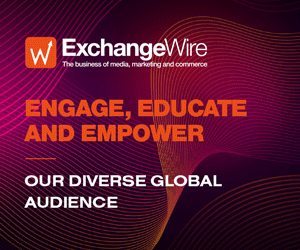You Do You. AI Will Do the Rest.
by Shirley Marschall on 25th Jun 2025 in News

In her latest for ExchangeWire, columnist Shirley Marschall takes a look at why generative AI is flipping the script on advertising power…
The digital ecosystem was built on a fundamental assumption: that marketers held the power. They owned the message, the media, the targeting and, eventually, the optimisation.
But GenAI is quietly rewriting the script.
Because while companies race to optimise workflows…
Consumers are optimising life flows.
And it’s not just happening in the background, it’s happening at scale.
One billion users can’t be wrong. Or idle.
According to recent remarks by Sam Altman at TED, ChatGPT’s weekly active users may have reached almost 1 billion, doubling from 500 million just weeks earlier. And that’s just one of many - Claude, Gemini, Lama, Grok, and the list goes on - GenAI tools!
Nearly 1/10th of humanity, logging in not to share photos of their breakfast, but to get things done (and yes, occasional viral crazes like turning themselves into action figures…).
This isn’t just tech adoption, it’s adaptation. At scale.
People aren’t waiting for personalisation anymore. They’re taking control. They’re building their own filters.
We often talk about how AI is transforming advertising, from automation and targeting to hyper-personalisation and performance modeling. But what if we’re asking the wrong question?
What if AI isn’t just changing how marketers operate but how consumers engage?
Because while brands and agencies are still figuring out how to use AI to optimise workflows, consumers are already using it to optimise their lives. And they’re not waiting for permission.
Marketers are optimising campaigns. People are optimising reality.
Ad tech’s version of AI still lives in dashboards and data streams. It’s technical, abstract, and designed for scale.
But consumers are using AI very differently:
- As a shield
- As a filter
- As a personal assistant
We’re not just watching two sides use the same tools.
We’re witnessing a power shift.
One where the loop might close…but not the way marketers expected.
Goodbye personalisation. Hello, delegation.
This isn’t about browser extensions or cookie opt-outs anymore. This is about a new generation of AI tools quietly shifting control - not over data, but over experience.
Don’t like podcasts? Let AI summarise the transcript.
Don’t want to sit through a YouTube ad? Use AI to extract the key points from the video.
Find news sites cluttered and annoying? Ask your assistant for a clean roundup and dig deeper only when it matters.
Need the gist of a webinar or panel? Feed it to a summariser or let your AI attend. No registration, no retargeting pixel, no funnel.
Hate online shopping? Don’t do it. Let AI compare, shortlist, and even purchase based on your preferences.
We’re not just seeing the rise of personalised media, we’re watching the rise of personalised media agents.
And unlike traditional ad blockers, these tools don’t just shut off the feed, they extract the value without ever seeing the ad.
It’s not opt-out. It’s opt-over.
From targeting people to being targeted by them
Marketers have long talked about targeting the “right person at the right time in the right context.”
But now, consumers are doing the same.
They’re deciding which content to engage with, which interruptions to skip, which information to extract and how.
They’re not just exposed to media anymore.
They’re curating it.
Editing it.
Outsourcing it.
On demand. In real time.
And that’s a level of agency the advertising industry has never had to contend with.
From workflows to life flows
Just like marketers have long relied on DSPs to optimise media, consumers are now relying on GenAI to optimise everything else.
It’s not about hyper-personalised ads anymore.
It’s about personalised living.
And it shows. According to new research by the Harvard Business Review, the top GenAI use cases in 2025 aren’t technical, they’re emotional and functional:
- Therapy and companionship
- Organising my life (a new entry in the top 3)
- Finding purpose
- Healthier living
These aren’t classic B2C verticals.
They’re human needs, delegated to AI.
Summarising. Scheduling. Searching.
Not by corporations. By people.
Not slowly. Instinctively. At speed.
The consumer is no longer just the target. They’re becoming their own chief optimisation officer.
So, what happens next?
AI was supposed to help businesses optimise at scale.
But maybe the real revolution is this: Consumers now have the same optimisation powers brands have been using for years.
They can filter noise, skip ads, summarise content, and outsource decisions, with zero friction.
This isn’t about privacy anymore. It’s about preference.
It’s not about skipping ads. It’s about skipping attention altogether.
So where does advertising go when people can simply opt out of the experience?
It has to earn its way back in. That might mean:
- Native formats that don’t feel like ads.
- Creative that doesn’t beg for attention but deserves it.
- Content worth sticking around for, because AI won’t skip what people want.
And ironically, that shift might actually save the industry.
Because when people start choosing what they engage with - actively subscribing, listening, reading - attention becomes meaningful again. Not forced, not faked, not bought in bulk. Earned.
We’re not heading toward ad oblivion. We’re heading toward an ad reckoning.
And it’s not about being louder. It’s about being wanted.
This isn’t about rejecting media. It’s about refining it.
Humans will still do what they like - listen, read, shop, scroll - but they’ll do it on their terms, streamlined by AI.
And maybe… that’s what AI promised us all along:
AI doesn’t have to replace people.
It can reposition them by filtering noise, freeing attention, and unlocking the ability to focus on what actually matters.
Not as a threat. But as a tool to evolve our roles and boost human potential.








Follow ExchangeWire